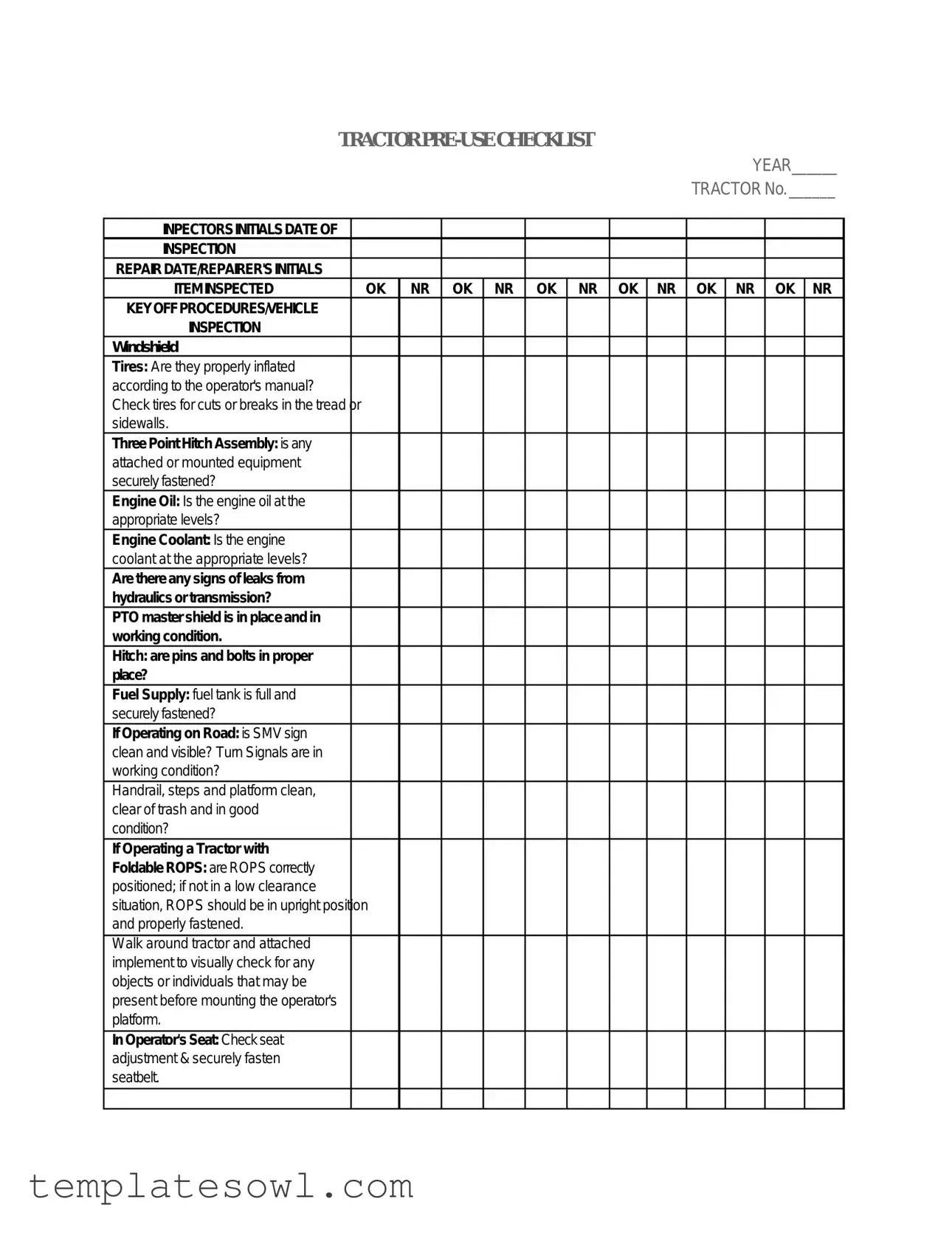What is the purpose of the Tractor Checklist form?
The Tractor Checklist form is designed to ensure that a tractor is safe and operational before use. It provides a systematic approach to inspect vital components and systems of the tractor, helping to identify any issues that may need attention.
How often should the Tractor Checklist be completed?
The Tractor Checklist should be completed before each use of the tractor. Regular inspections help to maintain safety and functionality, reducing the risk of accidents or breakdowns during operation.
What does 'NR' mean on the checklist?
'NR' stands for 'Needs Repair.' This indicates that the inspected item is not functioning properly and requires attention. Items marked as NR should be reported to a supervisor for immediate repairs.
What items are inspected in the Tractor Checklist?
The checklist covers various items, including tires, engine oil levels, coolant levels, fuel supply, signals, and operational controls. It ensures that all essential aspects of the tractor are checked before use.
Who is responsible for completing the Tractor Checklist?
The individual operating or inspecting the tractor is typically responsible for completing the checklist. This person needs to initial the form to indicate that the inspection has been performed.
What should be done if a problem is found during inspection?
If any issues are detected during the inspection, they must be reported immediately to the supervisor. The tractor should not be used until all necessary repairs have been made and the equipment is deemed safe for operation.
Why is it important to check the fuel supply before operation?
Ensuring the fuel tank is full and securely fastened is essential for uninterrupted operation. Running out of fuel could lead to unexpected downtime or operational hazards.
What specific aspects of the tires are checked?
During the inspection, check that the tires are properly inflated according to the operator's manual. Look for any cuts, breaks, or signs of wear in the tread or sidewalls that could compromise safety.
What are ROPS, and why is their position important?
ROPS stands for Roll Over Protection Structure. It's crucial to ensure that ROPS are correctly positioned, especially if the tractor is being used in areas with low clearance. Properly fastening and adjusting ROPS can enhance operator safety in case of an overturn.
What should be checked when starting the tractor?
When starting the tractor, check gauges and instruments, including oil lights and engine temperature gauge. Ensure that all standard equipment, like brakes and lights, is functioning correctly before proceeding.


